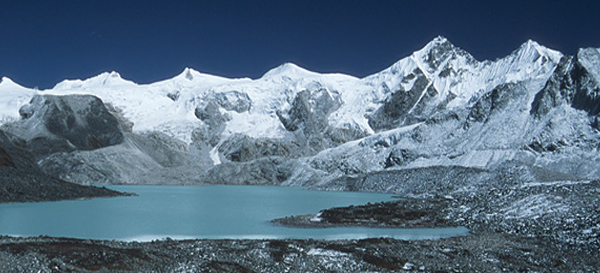- Home |
- Why With Us |
- About Us |
- Booking |
- Contact Us |
- Site Map
- Home
-
Nepal
-
Trekking
- Arun Valley with Gokyo Lakes
- Everest Base Camp Trek
- Everest- A Living Culture Exploration
- Everest Explore
- Everest Base Camp (via Thame) Trek
- Everest Base Camp with Kala Patthar
- Everest Comfort Trek
- Everest High Passes with Ama Dablam Base Camp
- Everest Mani Rimdu Festival Trek
- Everest Nagpa La Trek
- Everest with three high passes
- Gokyo Ri, Chola Pass & Chukung Ri with Kala Patthar
- Gokyo with Everest Base Camp
- Jomsom - Muktinath
- Jomsom - Muktinath
- Khayar Lake Trek
- Manaslu and Tsum Valley with Larkya La
- Upper Mustang Trek
- Manaslu High Circuit
- Manaslu, Tilicho Pass & Upper Mustang
- Annapurna Base Camp Trek
- The Annapurna Circuit Trek
- Annapurna Panorama
- Nar and Phu Valley Trekking
- Nepal Rhododendron Trek
- Royal Trek
- Saribung Trek and Expedition
- Annapurna Sanctuary Trek
- The Annapurna Sunrise Trek
- Expedition
-
Rafting
-
Peak Climbing
-
Tours
- Kathmandu-Chitwan-Jungle Tour with visit to Pokhara
- Dawn to Dusk Tour
- Historical, Natural & Cultural Tour with Camping
- Kathmandu Valley Temple Tour
- Temple - Panorama - Jungle Tour
- Taste of Nepal
- Central Nepal Tour
- Explore Nepal Tour & Trek
- Nepal Cross-country Tour
- Best of Nepal Tour & Treks
- Kathmandu valley rim Tour & Treks
- Nepal Culture Tour
- Introduction to Nepal Tour & Treks
- Nepal at a glance Tour & Treks
- Wonders of Nepal Tour & Treks
- Glimpses of Nepal Tour & Treks
- Through the Silhouette Tour & Treks
- Tent and Temple Tour
- Kathmandu-Chitwan-Pokhara Tour
- Historical, Cultural City and Jungle Tour
- Nepal Wildlife Tour
- Nepal Panorama Historical Tour
- Nepal Adventure Tour
- Nepal Pilgrimage Tour
- Ghalegaun-Ghanapokhara Homestay Tour
- Jungle Safari
- Adventure Sports
-
Trekking
- Tibet
-
Bhutan
-
India
- Yoga Tour
- About Us
-
The Great Himalayan Trail
-
Short Tours/Treks

When to Go

Climate, and therefore season, is certainly a consideration when planning your trip to Bhutan, especially if you are trekking. However, Bhutan’s altitude range, from subtropical valleys to alpine peaks, and its busy festival calendar means you can pretty much visit Bhutan at any time of the year to explore its attractions and witness colourful festivals.
The ideal time for trekking and for travelling throughout the country is autumn, from late September to late November, when skies are generally clear and the high mountain peaks rise to a vivid blue sky. While the climate is best in autumn, in Bhutan an umbrella is usually never far from reach, and no matter when you go, there is likely to be rain periods. Autumn is also the time of the popular Thimphu tsechu (dance festival) and heralds the arrival of the black-necked cranes to their wintering grounds in central and eastern Bhutan. Not surprisingly, therefore, international visitors also peak in autumn, indeed about half of the total annual tourist numbers arrive between September and November. Avoiding the busiest tourist seasons can save you money and hassle.
The winter is a good time for touring in western Bhutan, bird-watching in the south’s subtropical jungles, and whitewater rafting. The days are usually sunny, cool and pleasant, but it’s quite cold once the sun sets and you will need to pack warm clothing. From December to February, there is often snow in the higher regions and occasional snow in Thimphu. The road from Thimphu to Bumthang and the east may be closed because of snow for several days at a time. It would be best not to plan to visit these regions at this time.
Spring, from March to May, is recognised as the second best time to visit Bhutan for touring and trekking. Though there are more clouds and rain than in the autumn, the magnificent rhododendrons, magnolias and other wildflowers are in bloom and birdlife is abundant. You can get occasional glimpses of the high peaks, but these are not the dramatic unobstructed views possible in autumn. Spring is also the time of the magnificent Paro tsechu.
Summer, from June to August, is the monsoon season. And what a monsoon! During these three months 500mm of rain falls in Thimphu and up to a metre falls in the eastern hills. The mountains are hidden, the valleys are shrouded in clouds, and roads disappear in heavy downpours and floods. Summer is still a great time to visit Paro, Thimphu and other parts of western Bhutan. In the mellow monsoon light, the vivid green rice paddies contrast with the dark hills and the stark white dzongs to produce picture-perfect vistas. And the markets are bursting with fresh fruits and vegetables.
A major factor in choosing a time to visit Bhutan, and one that may override considerations of weather patterns, is the festival schedule. These colourful events offer a first-hand glimpse of Bhutanese life and provide an opportunity to see the inside of the great dzongs. It’s possible, and highly recommended, to work at least one festival into a tour or trek program. In recent years overcrowding has become an issue during the major tsechus at Thimphu and Paro, which coincide with the best seasons. At these times flights and accommodation are heavily booked and you may find you need to pay a premium for accommodation or settle for lower-standard accommodation. You stand a much better chance of getting flights, accommodation and probably a more intimate and rewarding festival experience if you schedule your trip around one of the other cultural events.

Trekking in Nepal
Expeditions In Nepal
Rafting in Nepal
Tours in Nepal
All rights reserved.



